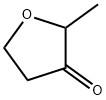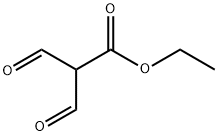RK-682
Synonym(s):(R)-3-Hexadecanoyl-5-hydroxymethyltetronic acid;(R)-4-Hydroxy-5-(hydroxymethyl)-3-(1-oxohexadecyl)-2(5H)-furanone
- CAS NO.:154639-24-4
- Empirical Formula: C21H36O5
- Molecular Weight: 368.51
- MDL number: MFCD09752706
- SAFETY DATA SHEET (SDS)
- Update Date: 2023-05-21 10:59:17

What is RK-682?
Description
TAN 1364B is a protein tyrosine phosphatase (PTP) inhibitor and the racemic and monomeric form of RK-682 . TAN 1364B inhibits the activity of the PTPs LMW-PTP, CDC25B, and PTP1B (IC50s = 8.6, 12.4, and 0.7 μM, respectively), but the inhibitory activity against LMW-PTP and CDC25B is blocked in the presence of magnesium. TAN 1364B forms aggregates in solution and binds to both the PTP binding site and to protein surfaces.
The Uses of RK-682
TAN 1364B (RK-682) is the most abundant analogue of a tetronic acid complex isolated from Streptomyces species, first patented by Takeda in 1993 and more formally identified by Ciba Geigy as the sodium salt of 3-hexadecanoyl-5-hydroxymethyltetronic acid. In 1995 researchers at RIKEN reported the isolation of 3-hexadecanoyl-5-hydroxymethyltetronic acid, named as RK-682. Subsequent synthesis in 2001 showed that the RIKEN RK-682 was in fact the calcium complex of TAN 1364B formed as an artefact during silica chromatography. As the complex, salt or free acid, TAN 1364B inhibits protein tyrosine phosphatases, phospoholipase A2, heparinase and HIV-1 protease. However, it is unclear whether biological activity is due to the monomer (TAN 1364B) or dimeric complex (RK-682)
The Uses of RK-682
TAN 1364B is the most abundant analogue of a tetronic acid complex isolated from Streptomyces species, first patented by Takeda in 1993 and more formally identified by Ciba Geigy as the sodium salt of 3-hexadecanoyl-5-hydroxymethyltetronic acid. In 1995 researchers at RIKEN reported the isolation of 3-hexadecanoyl-5-hydroxymethyltetronic acid, named as RK-682. Subsequent synthesis in 2001 showed that the RIKEN RK-682 was in fact the calcium complex of TAN 1364B formed as an artefact during silica chromatography. As the complex, salt or free acid, TAN 1364B inhibits protein tyrosine phosphatases, phospoholipase A2, heparinase and HIV-1 protease. However, it is unclear whether biological activity is due to the monomer (TAN 1364B) or dimeric complex (RK-682)
What are the applications of Application
RK-682, Streptomyces sp. is an effective tyrosine phosphatase inhibitor
Properties of RK-682
| Boiling point: | 546.7±50.0 °C(Predicted) |
| Density | 1.073±0.06 g/cm3(Predicted) |
| storage temp. | Store at -20°C |
| solubility | Methanol: soluble |
| form | Pale yellow solid. |
| pka | 1.80±0.10(Predicted) |
Safety information for RK-682
Computed Descriptors for RK-682
New Products
4-AMINO-TETRAHYDRO-PYRAN-4-CARBOXYLIC ACID HCL 4-(Dimethylamino)tetrahydro-2H-pyran-4-carbonitrile 4-Aminotetrahydropyran-4-carbonitrile Hydrochloride (R)-3-Aminobutanenitrile Hydrochloride 3-((Dimethylamino)methyl)-5-methylhexan-2-one oxalate 1,4-Dioxa-8-azaspiro[4.5]decane 5-Bromo-2-nitropyridine Nimesulide BP Aceclofenac IP/BP/EP Diclofenac Sodium IP/BP/EP/USP Mefenamic Acid IP/BP/EP/USP Ornidazole IP Diclofenac Potassium THOMAIND PAPER PH 2.0 TO 4.5 1 BOX BUFFER CAPSULE PH 9.2 - 10 CAP SODIUM CHLORIDE 0.1N CVS ALLOXAN MONOHYDRATE 98% PLATINUM 0.5% ON 3 MM ALUMINA PELLETS (TYPE 73) LITHIUM AAS SOLUTION 2-Bromo-1-(bromomethyl)-3-chloro-5-nitrobenzene 2-Bromo-3-nitroaniline N-(3-Hydroxypropyl)-N-methylacetamide 3-Bromo-6-chloropyridazine 4-ethyl-3-nitrobenzoic acidRelated products of tetrahydrofuran








You may like
-
 1-Methyl-6-oxo-1,6-dihydropyridazine-3-carbonitrile 98%View Details
1-Methyl-6-oxo-1,6-dihydropyridazine-3-carbonitrile 98%View Details
99903-60-3 -
 88491-46-7 98%View Details
88491-46-7 98%View Details
88491-46-7 -
 1823368-42-8 98%View Details
1823368-42-8 98%View Details
1823368-42-8 -
 2-(3-(tert-butyl)phenoxy)-2-methylpropanoic acid 1307449-08-6 98%View Details
2-(3-(tert-butyl)phenoxy)-2-methylpropanoic acid 1307449-08-6 98%View Details
1307449-08-6 -
 Ethyl 3-(furan-2-yl)-3-hydroxypropanoate 25408-95-1 98%View Details
Ethyl 3-(furan-2-yl)-3-hydroxypropanoate 25408-95-1 98%View Details
25408-95-1 -
 2-Chloro-5-fluoro-1-methoxy-3-methylbenzene 98%View Details
2-Chloro-5-fluoro-1-methoxy-3-methylbenzene 98%View Details
1805639-70-6 -
 1784294-80-9 98%View Details
1784294-80-9 98%View Details
1784294-80-9 -
 Lithium ClavulanateView Details
Lithium ClavulanateView Details
61177-44-4